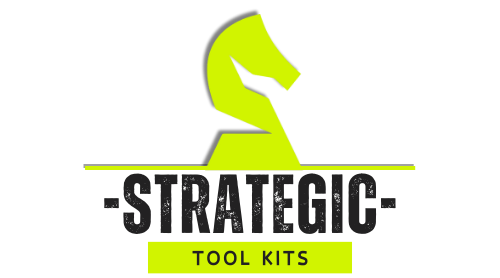Investing in your employee’s health and well-being is more than just a noble endeavor—it’s a strategic move that can yield significant returns. A well-executed wellness program can lead to improved productivity, lower healthcare costs, and increased employee engagement.
According to the American Journal of Health Promotion, companies that implement comprehensive wellness programs see a 28% reduction in sick leave and a 26% reduction in healthcare costs.
Assessing Needs and Setting Goals
The first step in creating an effective wellness program is understanding what your employees actually need and want. This involves going beyond assumptions and gathering concrete data.
Start by conducting anonymous employee surveys that ask detailed questions about their health interests, challenges, and preferences.
- “What wellness activities would you be most interested in participating in?”
- “What barriers prevent you from engaging in healthy behaviors?”
In addition to surveys, consider offering voluntary Health Risk Assessments (HRAs) to identify common health issues within your workforce. Analyzing existing data such as absenteeism records, healthcare claims, and productivity reports can also provide valuable insights into trends and areas that need attention.
By involving employees in this initial stage, you not only gather crucial information but also foster a sense of ownership and engagement from the outset.

Setting SMART Goals for Your Program
Once you’ve gathered sufficient data, it’s time to set clear and achievable goals.
- Specific: Clearly defined and focused on particular outcomes.
- Measurable: Quantifiable so you can track progress and success.
- Achievable: Realistic given your resources and constraints.
- Relevant: Aligned with both employee needs and organizational objectives.
- Time-bound: Set within a specific timeframe.
For example, instead of a vague goal like “Improve employee health,” you might set a SMART goal such as: “Increase employee participation in wellness activities by 20% within the next six months to reduce overall stress levels and improve productivity.”
Designing the Program

Components of an Effective Wellness Program
An effective wellness program typically includes the following components:
- Fitness activities (e.g., gym memberships, yoga classes)
- Nutrition education and healthy eating options
Mental Health Support
- Stress management workshops
- Access to counseling services
Preventive Care
- On-site health screenings
- Vaccination clinics
Lifestyle Management
- Smoking cessation programs
- Weight loss support groups
Work-Life Balance
- Flexible work arrangements
- Time management training
To maximize the benefits of wellness programs, companies may also consider how their compensation structures, such as alternative pay schedules, can further support employee well-being by reducing financial stress.
Choosing Appropriate Activities and Initiatives
Based on your needs assessment, select activities that resonate with your employees.
- Interest Level: Choose programs with high employee interest to encourage participation.
- Accessibility: Ensure programs are easily accessible to all employees, including remote workers.
- Cost-effectiveness: Balance the benefits with the budget.
| Activity | Employee Interest (%) | Cost Estimate | Implementation Ease |
|---|---|---|---|
| On-site Fitness Classes | 65% | Moderate | High |
| Healthy Cafeteria Options | 80% | Low | Moderate |
| Mental Health Workshops | 55% | Low | High |
| Smoking Cessation Program | 30% | Low | High |
Creating a Supportive Environment
- Physical Environment: Provide ergonomic workstations, standing desks, and spaces for physical activity.
- Policy Support: Implement policies that promote well-being, such as flexible scheduling or mandatory breaks.
- Leadership Involvement: Encourage managers to participate in and support wellness initiatives.
Implementation Strategies

Developing a Communication Plan
- Multi-channel Communication: Use emails, intranet, posters, and meetings to announce programs.
- Clear Messaging: Explain the benefits and how to participate.
- Regular Updates: Provide ongoing information about upcoming events and program results.
| Week | Communication Activity |
|---|---|
| Week 1 | Program launch announcement via email and flyers |
| Week 2 | Informational meeting and Q&A session |
| Week 3 | Reminder emails and sign-up encouragement |
| Week 4 | Program commencement notification |
Engaging Employees
- Incentives and Rewards: Offer incentives like gift cards, extra vacation days, or wellness merchandise.
- Competitions and Challenges: Organize team-based challenges to foster camaraderie.
- Personalization: Allow employees to choose activities that suit their interests and schedules.
Leveraging Technology
- Wellness Apps: Utilize apps for tracking fitness goals, nutrition, and sleep.
- Online Platforms: Create an online portal where employees can access resources and track progress.
- Virtual Events: Host webinars and virtual classes for remote employees.
Measuring Success Through Data

Regularly evaluating your program helps you understand what’s working and where adjustments are needed.
Key Performance Indicators (KPIs)
- Participation Rates: Percentage of employees engaged in various activities.
- Health Metrics: Changes in aggregate health data (e.g., average BMI, blood pressure levels).
- Productivity Metrics: Changes in absenteeism, presenteeism, and overall productivity.
- Employee Satisfaction: Feedback from surveys regarding the program’s impact on morale and engagement.
Data Collection Methods
Ensure you have systems in place to collect and analyze data while maintaining confidentiality. Use aggregated data to protect individual privacy.
Adapting and Improving Based on Feedback
Solicit feedback from participants to gain insights into their experiences.
Regular Surveys and Check-ins
- “What aspects of the program do you find most beneficial?”
- “Are there any challenges preventing you from participating fully?”
- “What improvements or additions would you like to see?”
Focus Groups and Interviews
Organize small group discussions to delve deeper into specific areas of interest or concern.
Continuous Improvement
- Adjusting the timing or frequency of activities.
- Introducing new initiatives based on employee interests.
- Allocating resources differently to maximize impact.
Best Practices and Considerations

| Best Practices and Considerations | Description |
|---|---|
| Ensuring Inclusivity and Accessibility | A successful wellness program is one that all employees can access and benefit from. |
| Addressing Diverse Needs | Recognize that your workforce may have diverse needs based on age, ability, cultural background, and personal circumstances. Offer a variety of activities that cater to different preferences and abilities. |
| Accommodations | Ensure that facilities and programs are accessible to employees with disabilities. This might include providing materials in alternative formats or ensuring physical spaces are navigable. |
| Compliance with Legal and Ethical Standards | Be mindful of legal considerations to protect both employees and the organization. |
| Confidentiality and Privacy | Adhere to regulations like HIPAA by safeguarding personal health information. Clearly communicate how data will be used and ensure that participation is voluntary. |
| Non-Discrimination | Ensure that the program does not inadvertently discriminate against any group. Participation should not be a factor in employment decisions. |
| Reasonable Incentives | Be aware of limits on incentives to avoid coercion. The Equal Employment Opportunity Commission (EEOC) provides guidelines on acceptable incentive levels. |
| Fostering a Culture of Wellness | For long-term success, wellness should be embedded into the organization’s culture. |
| Leading by Example | Encourage leaders at all levels to model healthy behaviors. When employees see their managers participating, it reinforces the importance of wellness initiatives. |
| Celebrating Successes | Acknowledge and celebrate milestones and achievements, both individually and collectively. This could be through company-wide communications, award ceremonies, or visual displays in communal areas. |
| Ongoing Education and Promotion | Keep wellness at the forefront by regularly introducing new topics, hosting guest speakers, or participating in national health observances like Heart Health Month or Mental Health Awareness Week. |
Conclusion
Creating an effective employee health and wellness program is a multifaceted endeavor that requires careful planning, execution, and continuous refinement. By understanding your employees’ needs, setting clear goals, and fostering an environment that supports well-being, you can enhance not only individual health but also organizational performance.
Remember, the journey towards a healthier workplace is ongoing. Stay committed, be open to feedback, and adapt as needed. The positive impacts on your employees’ lives and your organization’s success will be well worth the effort.

